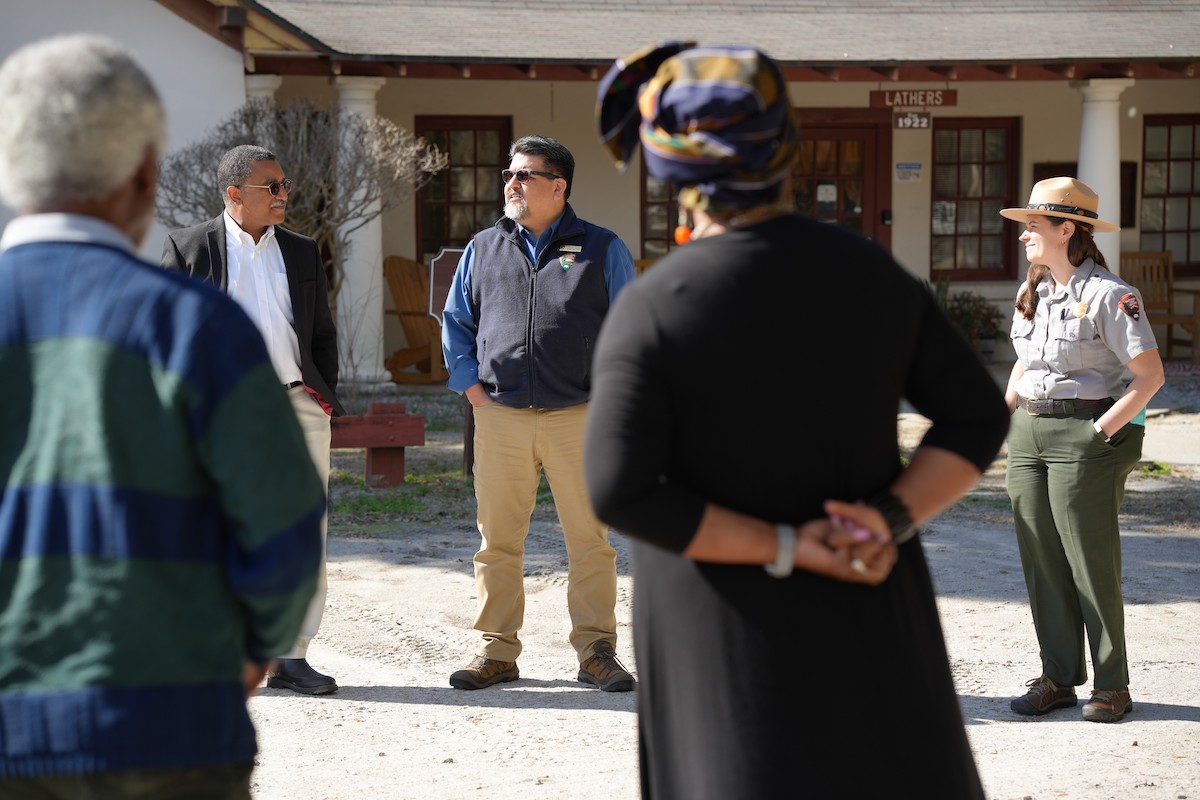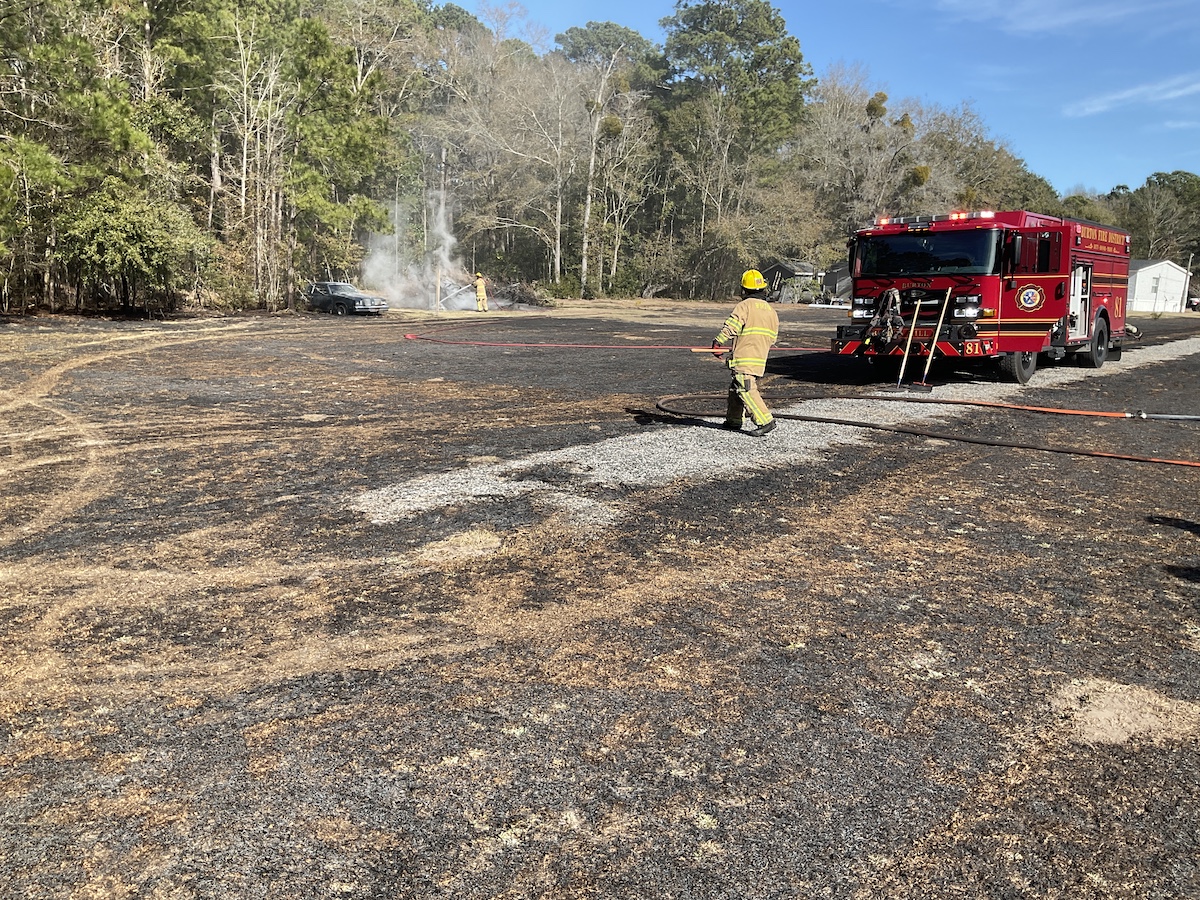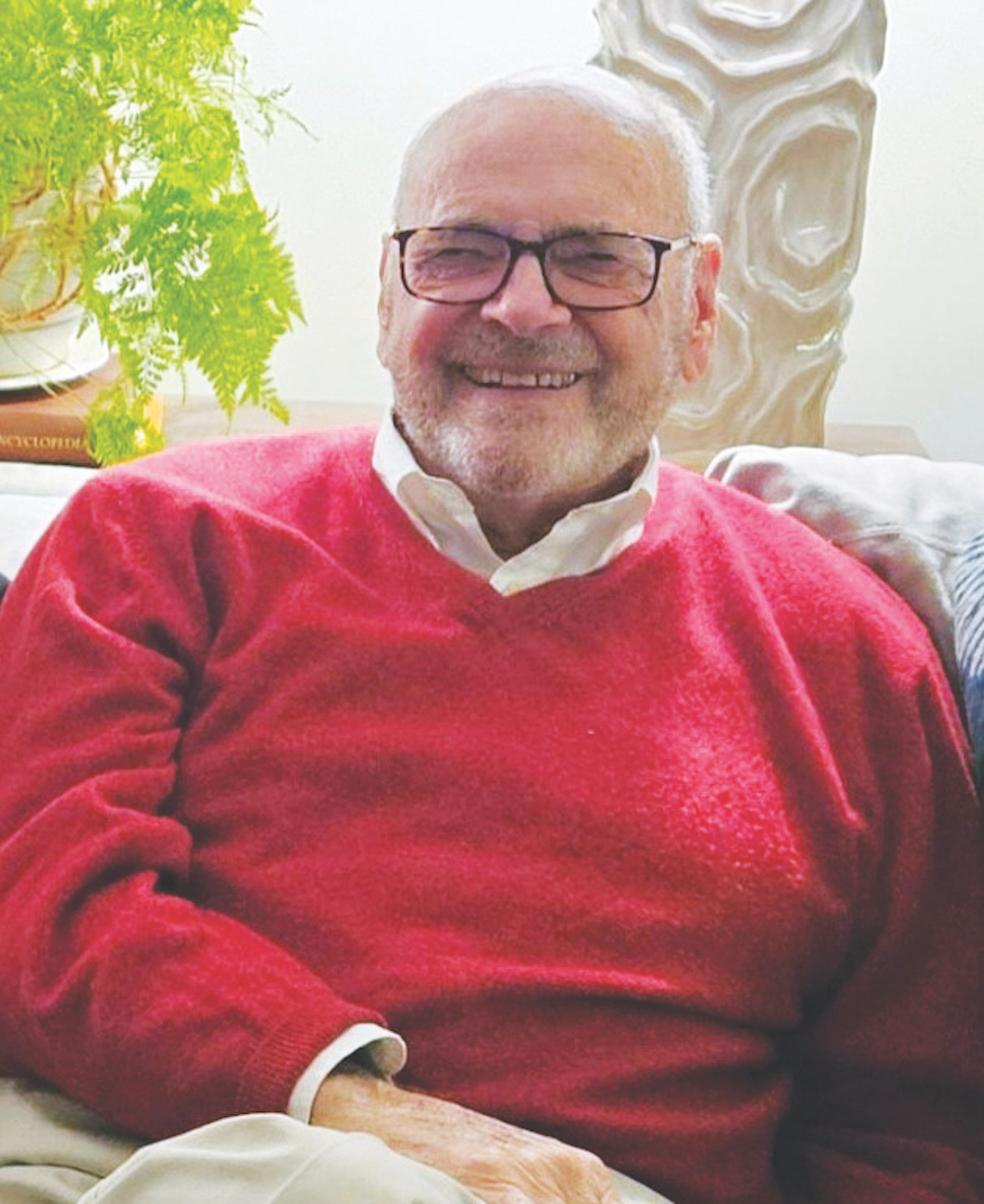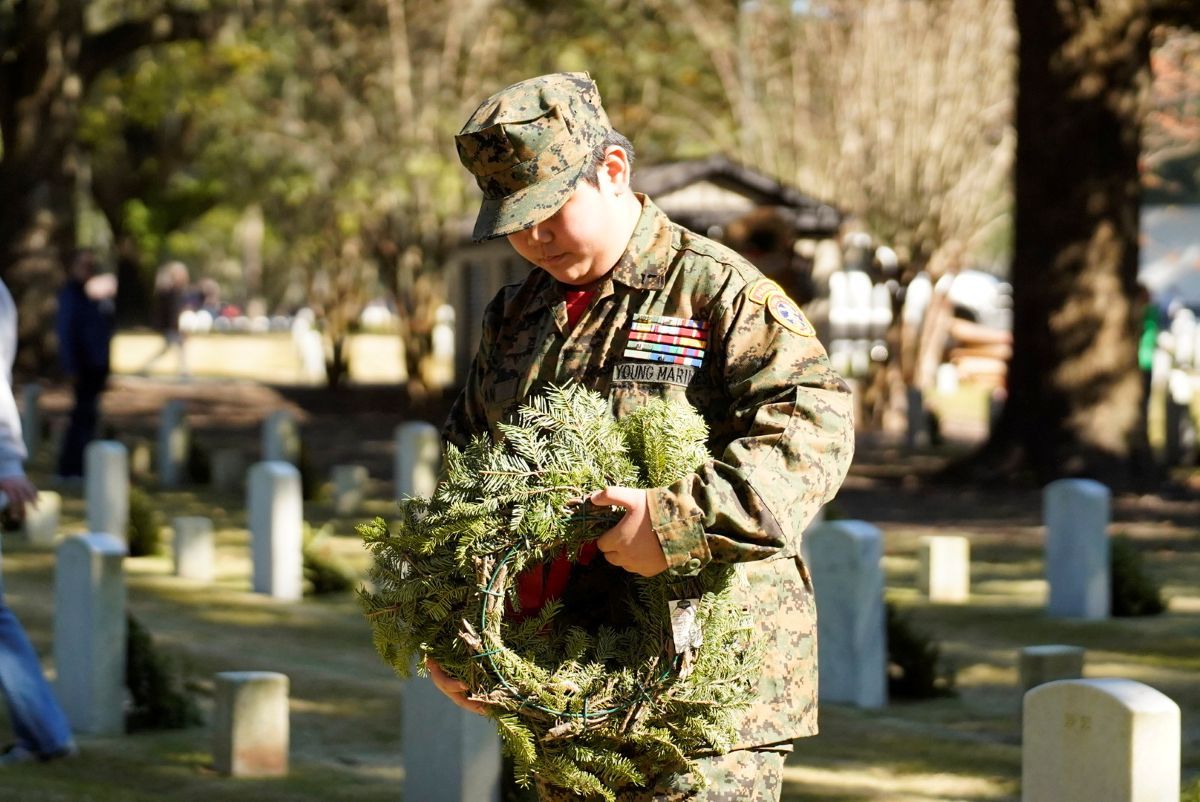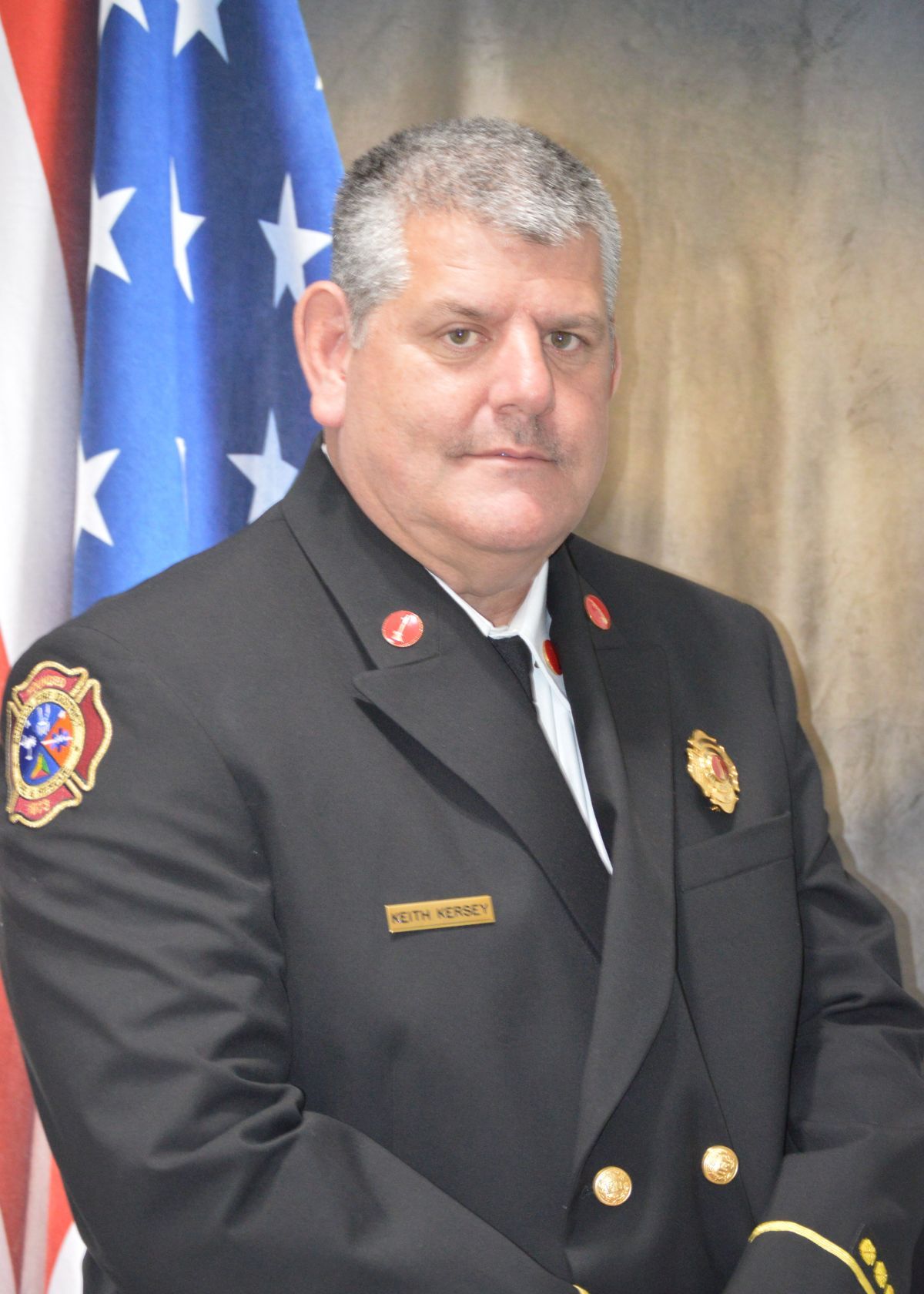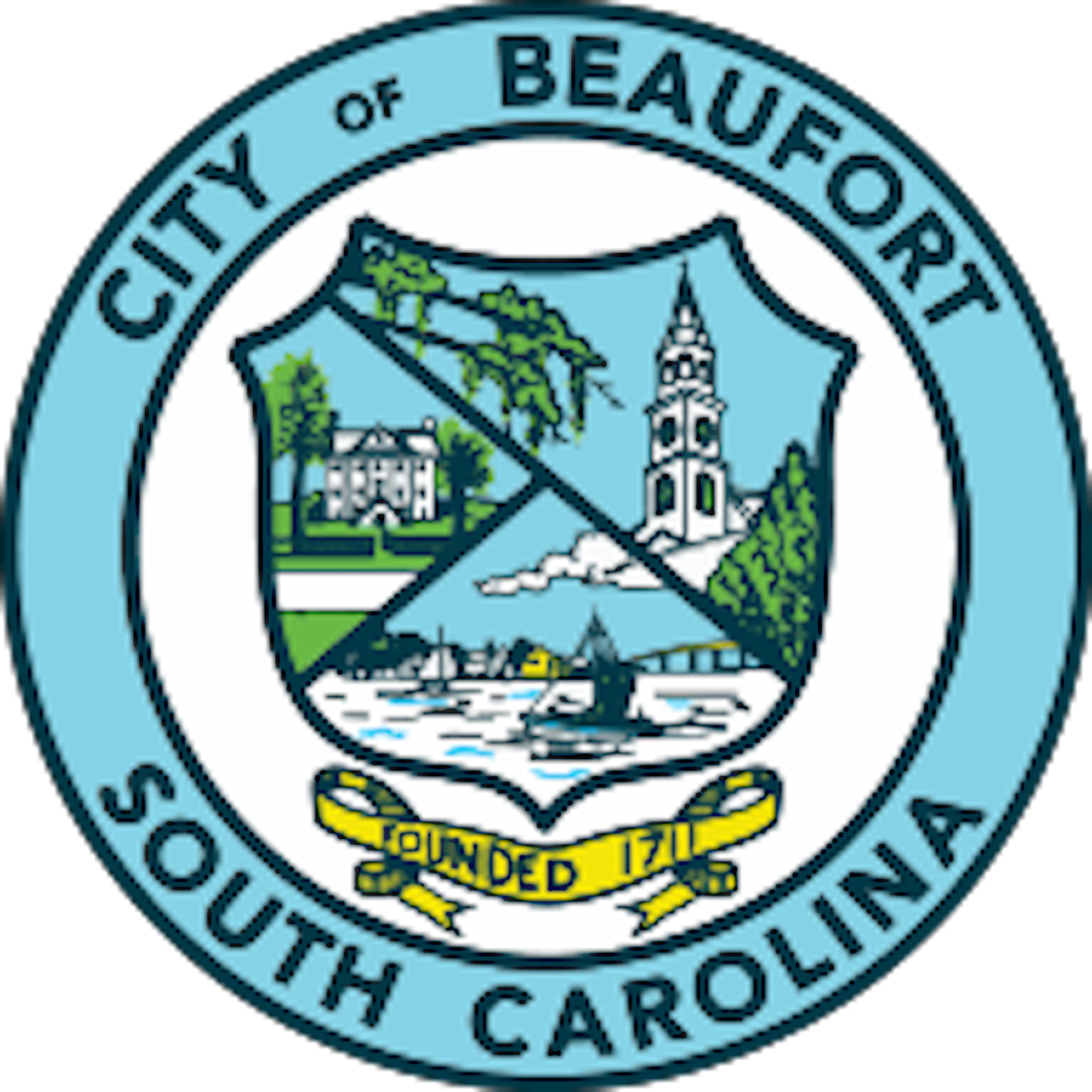From staff reports
National Park Service Director Chuck Sams paid a visit to Reconstruction Era National Historical Park in Beaufort on Friday, Feb. 16, when he highlighted the Department’s commitment to honoring the legacy and achievements of the Black community.
While at Penn Center on St. Helena Island, Sams, in commemoration of Black History Month announced five additions by the Department of the Interior to the Reconstruction Era National Historic Network, which was created in 2019 to recognize and amplify sites and programs throughout the country that share stories of freedom, struggle, education and self-determination associated with the period of Reconstruction from 1861 to 1900.
With Friday’s additions, there are now 107 listings in the Network spread across 28 states and Washington, D.C. They include schools, museums, churches and organizations managed by local or private entities, as well as multiple national parks.
“Reconstruction Era National Historical Park, and every member of the Reconstruction Era National Historic Network, enable us to reflect on the struggles and successes that took place during a time of significant transformation in our country,” Sams said. “The diversity of sites in the network illustrate the depth and breadth of the people, places and events involved with the reconstruction movement.”
“As we commemorate Black History Month, the Interior Department remains steadfastly committed to celebrating and honoring the diversity and resilience of the Black community,” Secretary Deb Haaland said in a news release. “The additions to the Reconstruction Era National Historic Network underscore the Biden-Harris administration’s efforts to ensure that a more complete and honest account of American history is shared.”
The new additions to the network are:
The 1838 Black Metropolis in Pennsylvania. This digital project examines the lives of 19th Century Black Philadelphians who built infrastructures for sanctuary for thousands of freedom seekers before, during and after the Civil War. Their website makes use of ArcGIS, Tableau and AI imaging combined with primary source archival research, to tell the histories of some of the most prominent Philadelphia families later involved with Reconstruction in South Carolina.
The Buffalo Soldiers Museum at Fort Lawton in Washington. Built in 1898, this site was the base for multiple African American Army units known as Buffalo Soldiers. The Band Barracks building in the Fort Lawton Historic District will house a new Buffalo Soldiers Museum, which will work to educate, preserve and present the local and national contributions of America’s Buffalo Soldiers from 1866 through Reconstruction and into the 20th Century.
The Dark Branch Descendants Association in North Carolina. The association is an independent, descendant-led organization devoted to centering the narratives and lived experiences of African American communities along the Lower Cape Fear River in North Carolina during the periods of enslavement and Reconstruction.
Fort Stanton Historic Site in New Mexico. From 1866 to the 1880s, this was the home to a unit of the United States Colored Troops, and later Buffalo Soldiers of the 9th and 10th Cavalry Regiments.
Fort Union National Monument in New Mexico. This site operated throughout Reconstruction as a base for Buffalo Soldiers of the 8th and 9th Cavalry Regiments.
Research or educational sites, facilities and programs with connections to the Reconstruction Era of 1861-1900 can apply to be in the network. More information about eligibility and the application process is available online.
While in the park, Sams also toured two historic buildings with rehabilitation and preservation projects funded by the Great American Outdoors Act (GAOA) Legacy Restoration Fund. GAOA funded Maintenance Action Teams composed of skilled craftspeople from the National Park Service Historic Preservation Training Center are performing the work.
The exterior of the Old Beaufort Firehouse, which serves as the park’s main visitor center, began the process of be repointed on Feb. 19. The park is also nearing completion of a major rehabilitation of the exterior of Darrah Hall. Crews have installed an accessible entrance ramp, repaired the front porch, replaced lap siding sections and cedar gable shingles, and painted shutters.
GAOA is part of a concerted effort to address extensive deferred maintenance and repair needs in national parks. Supported by revenue from energy development, GAOA provides the National Park Service with up to $1.3 billion per year for five years to make significant enhancements in national parks to ensure their preservation and provide opportunities for recreation, education and enjoyment for current and future visitors.
Sams also had the opportunity during his visit to meet with park partners from the Penn Center and Camp Saxton, as well as 25 local teachers participating in a professional development field trip.


